Lecture Overview
In his first lecture, Dustin explains that adaptive immunity allows an individual to specifically recognize and respond to a vast number of molecules. B cells recognize intact antigens and produce neutralizing antibodies. T cells, on the other hand, have receptors on their surface that recognize very small antigen fragments bound to MHC on the surface of antigen presenting cells (APC). Dustin explains that T cells overcome the challenges of finding and binding to the APCs with the help of a multitude of adhesion molecules. Once the T cell receptor has bound a peptide antigen, an immunological synapse, with its typical bulls-eye structure, is formed resulting in T cell activation.
In Part 2, Dustin describes how a reconstituted system has allowed the immunological synapse to be studied in molecular detail. It is possible to visualize the localization of signaling molecules such as kinases, and determine the role of the actin cytoskeleton in regulating this localization. Dustin also touches on the role of the immunological synapse in autoimmune disease and cancer.
In his last lecture, Dustin presents work from his lab showing that T cell receptor enriched vesicles are generated in the immunological synapse. These vesicles can be transferred to B cells leading to activation of the B cells and, potentially, the production of higher specificity antibodies.
Speaker Bio
Michael Dustin is Professor of Immunology and Director of Research at The Kennedy Institute of Rheumatology at the University of Oxford. Prior to joining the Kennedy Institute, Dustin was a faculty member at the Skirball Institute of Biomolecular Medicine at New York University from 2001-2013 and at Washington University School of Medicine from 1993-2000. Dustin received his BA in Biology from Boston University and his PhD in Cell and Developmental Biology from Harvard University.
As described in his iBioSeminar, Dustin’s lab studies the molecular events that take place at the immunological synapse. Future research will focus on developing therapies targeted to the immunological synapse to cure chronic inflammatory illnesses such as rheumatoid arthritis.
Dustin is an active participant in the immunology community; he is a member of numerous grant review committees and journal editorial boards. His research has been recognized with many awards including the 2000 Presidential Early Career Award in Science and Engineering and the 2012 DART-NYU Biotechnology Achievement Award.
Medical and Patient education videos
-
Title
Description
-

Part 8 of the Management of chronic and allergic pulmonary aspergillosis. Clinical failure and management – how to manage patients who have not responded to standard antifungals. by Prof David Denning. As presented at the 5th AAA meeting in Istanbul 25th January 2012.
-

Management of allergic and chronic pulmonary aspergillosis. Toxicity of tri-azole antifungals. Dr Caroline Baxter at the 5th Advances Against Aspergillosis..
-

Management of chronic and allergic pulmonary aspergillosis. Masterclass part 6 Antifungal side effects and toxicities. Prof Denning & Dr Caroline Baxter at the 5th Advances Against Aspergillosis.
-
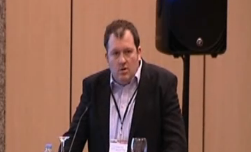
Management of allergic and chronic pulmonary aspergillosis. Masterclass part 5. Antifungal drug monitoring and azole dose modification. By Tim Felton at the 5th Advances Against Aspergillosis.
-
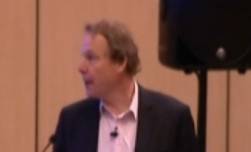
Management of allergic and chronic pulmonary aspergillosis. Masterclass part 4: Approaches to therapy by Prof David Denning. Presented at 5th Advances Against Aspergillosis conference in Istanbul January 2012
-
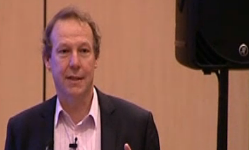
Management of allergic and chronic pulmonary aspergillosis masterclass by Prof David Denning, presented at AAA conference in Istanbul january 2012. Part 1 Clinical and Radiological presentation & diagnosis.
-

The first Aspergillosis for Patients Meeting was held in Rome on Feb 3rd, 2010. Many internationally renowned scientists and doctors gave an excellent review of Aspergillosis and the latest research and treatments at a level that was designed to be understandable by laypeople rather than doctors. Some talks are now also available as podcasts at the iTunes store – search for “aspergillus and aspergillosis podcasts”.
-
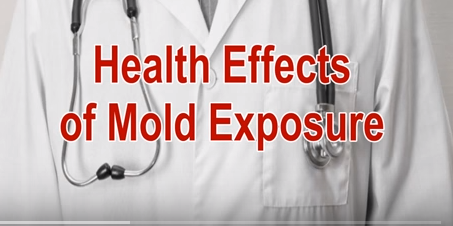
A summary of the potential health impacts of living in a damp home: Video provided by US companies with a financial interest in remediating homes so some marketing of specific services is featured. The Aspergillus Website does not endorse these specific services and care should be taken when employing anyone to carry out this type of work on your home.
-
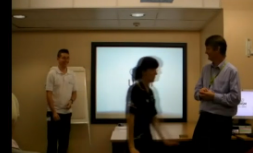
A collection of video and audio resources intended for patients consisting of self help, patients own stories and patient conference talks.
-

A patient interview. This patient RW- with long term chronic pulmonary aspergillosis describes his experiences over 18 years during which he has taken various antifungal treatments. He remains well and currently takes itraconazole. A synopsis is shown below. This patient underwent a lung resection in 1991 for a suspect lesion in his lung, histology revealed inflammation and an area containing fungal hyphae consistent with a fungal ball. Resection appeared to cure the problem. However in 1992 he re-presented with a large new cavity near the site of the surgery and a probable fungal ball seen on X ray. A bronchoscopy sample grew aspergillus and his blood tests were positive for aspergillus precipitins. Chronic pulmonary aspergillosis was diagnosed. Antifungal treatment on itraconazole was started and much improvement was seen. During the next few years the patient tried voriconazole (as a trial drug) – on which he experienced a red facial rash; IV amphotericin – which improved his condition markedly. Itraconazole treatment was then restarted and the patient has been largely stable on this antifungal drug over the last 13 years. On the occasions he has stopped the drug – he has relapsed and it has taken some months before he was again stable. The patient is currently in good health (11/09). We would like to thank the patient for agreeing to share his experiences.
